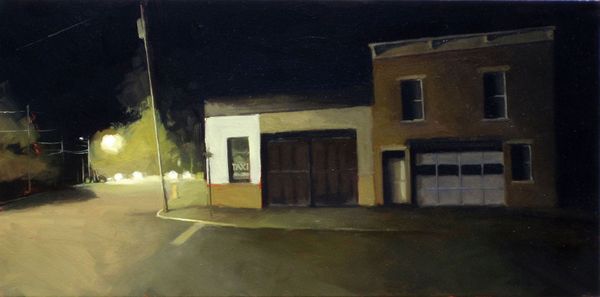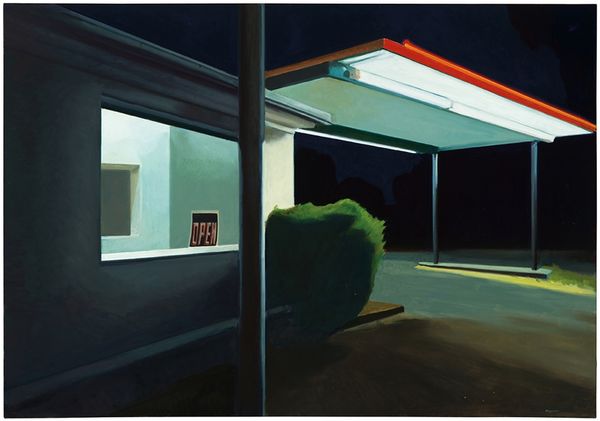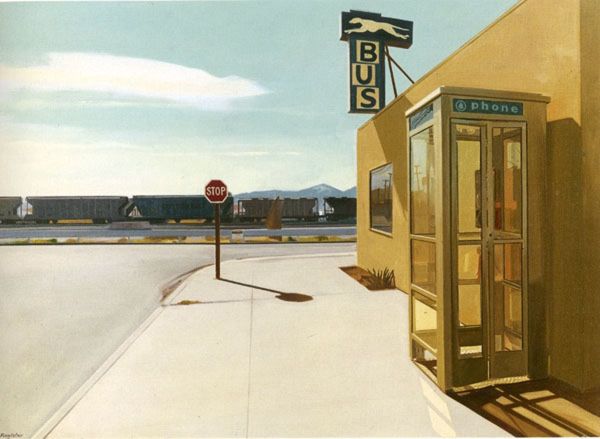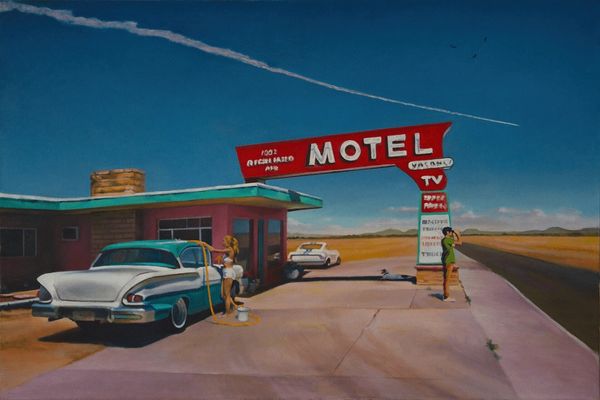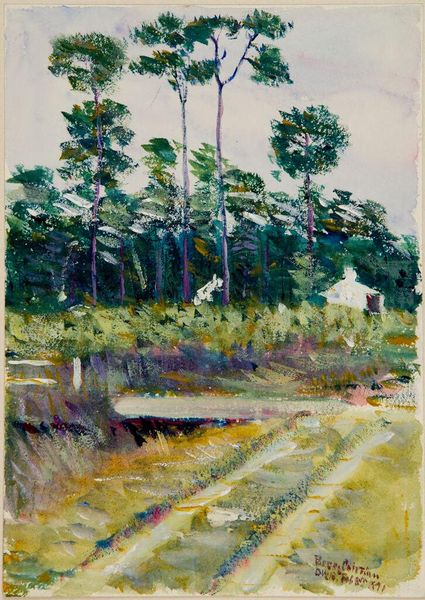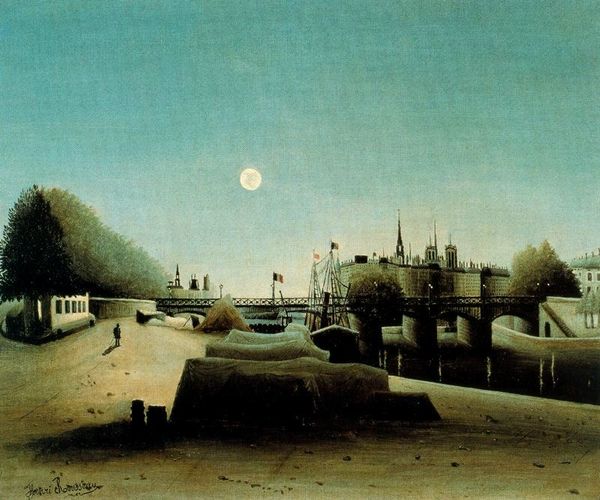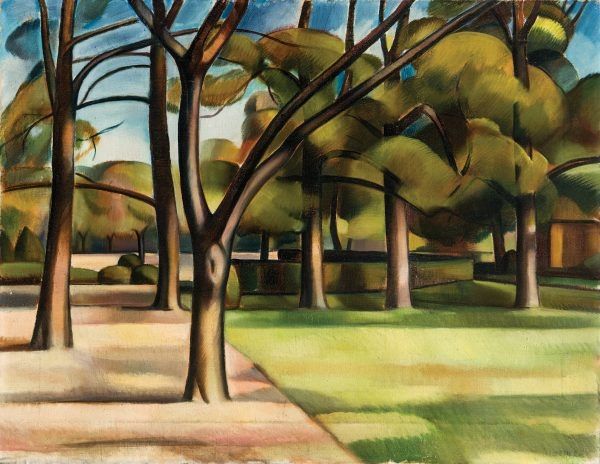
oil-paint
#
narrative-art
#
oil-paint
#
landscape
#
oil painting
#
cityscape
#
modernism
#
realism
Dimensions: 102.24 x 66.68 cm
Copyright: Edward Hopper,Fair Use
Editor: We're looking at Edward Hopper's "Gas," painted in 1940, using oil. It strikes me as a particularly American scene, but also lonely. The vibrant red pumps and the glow-in-the-dark signage contrasts dramatically with the encroaching darkness and the empty road. How do you interpret this work? Curator: Hopper’s "Gas" captures a pivotal moment in American history, reflecting the burgeoning car culture and its impact on the landscape, particularly roadside spaces. How do you see the gas station operating beyond a mere commercial outlet? Editor: Well, the isolated setting, the way the building's architectural details look generic. It suggests a certain social detachment and the unsettling effect of modern standardization? Curator: Precisely. Think about the date, 1940, on the cusp of World War II. This isn't just about roadside Americana; it reflects anxieties about the changing social fabric. What feelings do those large, empty, landscapes on the edge of the urban environment inspire? Editor: Now I understand. A blend of nostalgia and impending change, a yearning for simpler times coupled with an acceptance of progress? Curator: Hopper masterfully freezes that tension. He highlights how commercial spaces impact both local landscapes and communities by capturing the station at twilight and hinting to the longer journey one continues onto. Editor: The setting certainly seems chosen to stir thoughts about a wider experience. The symbolism seems more profound, showing economic shifts that also alter personal identity. Curator: The impact of modernization, captured at human scale. Hopefully you will consider the next time that you see the piece about its impact beyond art and towards cultural history. Editor: Yes, this piece reflects more than simple scenery; there’s a subtle story about society in flux.
Comments
No comments
Be the first to comment and join the conversation on the ultimate creative platform.
